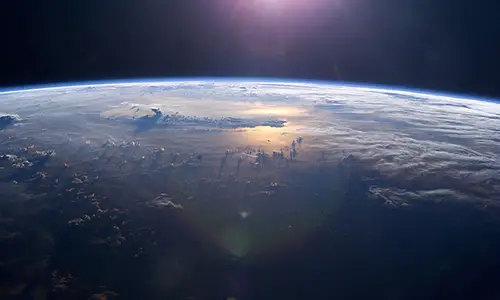1.Earth’s Ocean Coverage
Oceans cover about 70% of the entire Earth surface. Oceans are never calm. The waves they constantly experience are as a result of disturbances caused by gravitational pulls by the moon and sun as well as wind friction. Ocean waves occur as a result of energy passing in water causing circular motions in the water.
2.Ocean Depth
On average, oceans are 14000 feet (about 4267 meters) deep. However, the Challenger Deep found in the Mariana trench, below the Pacific Ocean’s western part happens to be the deepest ocean point known. The Challenger Deep has a depth of 36,070 feet, about 10,994 meters and was measured with an estimated plus or minus 40 meters vertical accuracy.
3.Ocean Waves do not transmit Water
In actual fact, water does not move in waves. Waves do not transmit water; rather they transmit energy across oceans. Where there is nothing to obstruct the waves, they are capable of travelling through a whole ocean basin.
4.Largest Oceans
The Pacific Ocean occupies 30% of the Earth’s surface and is the largest ocean. The Atlantic Ocean is the second largest Ocean and occupies 21% of Earth’s surface while the Indian Ocean which covers about 14% of the Earth surface is the third largest ocean. The original meaning of Pacific Ocean’s name is peaceful sea while the name of the Atlantic Ocean implies Atlas, from the Greek mythology.
5.Unique Ocean Features
The Atlantic Ocean is home to the mysterious Bermuda Triangle. The Pacific Ocean alone has about 25000 islands which is much more than a combination of those found on the other oceans. The Pacific Ocean is also surrounded by a numerous active volcanoes that are commonly referred to as the Pacific Ring of Fire.
6.Wind is the most common cause of Waves in Oceans
Most ocean waves are caused by wind. Surface waves or wind-driven waves are as a result of the fiction that occurs between the water surface and the wind. The wind causes continuous disturbances as it blows over the ocean or lake surface which results to wave crests. These kinds of waves are common across the world’s open oceans as well as along coastal lines.
7.Marine Life in Oceans
Oceans are home to numerous marine lives. Most forms of marine life have not been discovered yet and scientists say there may be millions more forms of marine life in oceans. In a marine life census spanning ten years, scientists described over 1200 new marine life species, thousand more await descriptions.
8.Severe weather causes hazardous ocean waves
More dangerous waves such as hurricane result from severe weather. The pressure from these kinds of severe storm combined with strong winds result to storm surge. A storm surge is a series of huge waves, usually long, that form in deeper waters, far away from the shore and tend to intensify as they draw closer to land.
9.Ocean Mountain Range
Oceans are home to the longest mountain ranges, measuring over 40000 miles in length, in the Universe. Mount Everest, which is Earth’s highest point, is more than one mile shorter compared to the Challenger Deep. The Monterey Bay, a Submarine Canyon is larger in volume and deeper than the Grand Canyon.
10.Underwater disturbances in Oceans
Hazardous ocean waves result from disturbances that happen below the water. Such disturbances include landslides, earthquakes and volcanic eruptions that result to huge displacements of water fast. Ocean waves that occur as a result of underwater disturbances are usually very long and are known as Tsunamis. Tsunamis and storm surge are the kind of waves that roll up the shore appearing like huge rises in sea levels and reach far into the land.











Leave a Reply